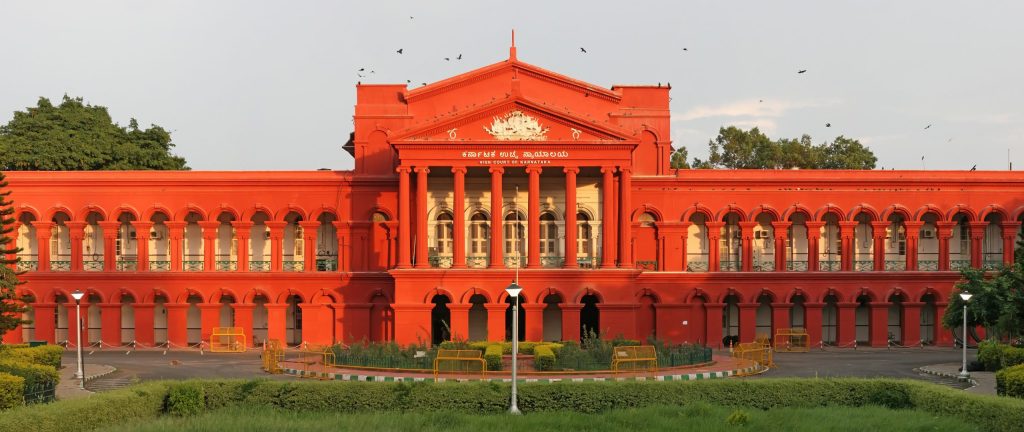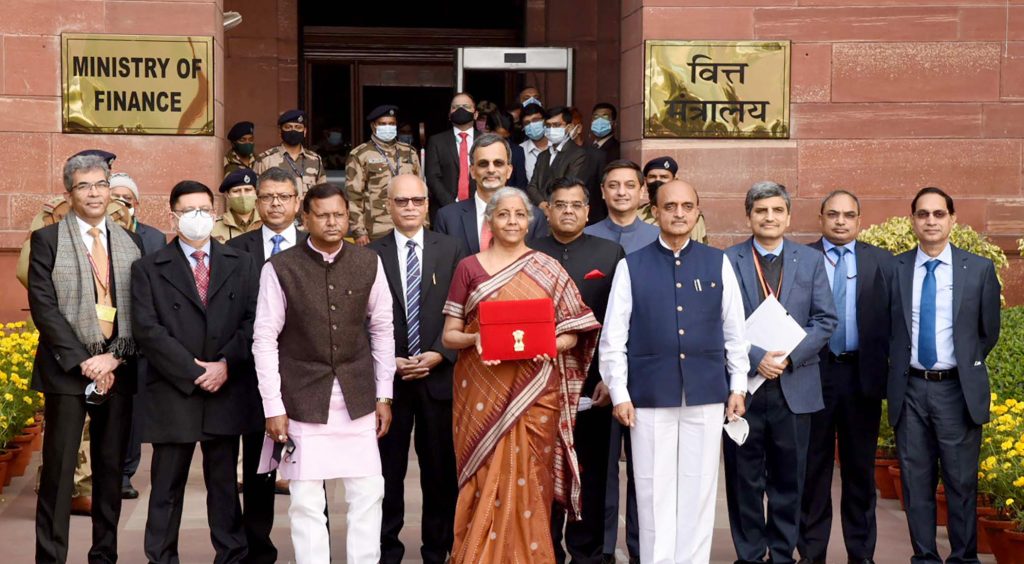Now Reading: Analysis of Income & Expenditure of National Political Parties for FY 2018-19
1
-
01
Analysis of Income & Expenditure of National Political Parties for FY 2018-19
Analysis of Income & Expenditure of National Political Parties for FY 2018-19
Political parties have multiple sources of funding and thus accountability and transparency should be an important aspect of their functioning. It is essential to have comprehensive and transparent accounting methods and systems which should reveal the true financial position of the parties.
The Election Commission of India (ECI), in its letter dated 19th November,’14 addressed to the Presidents/General Secretaries of all political parties, stated that it was mandatory for the parties to submit details of their audited reports to the Commission. This report analyses the total income and expenditure incurred, all over India, by the National Parties (less NCP) during FY 2018-19, as declared by the parties in their IT Returns submitted to the ECI.
The National Parties include Bharatiya Janata Party (BJP), Indian National Congress (INC), Bahujan Samaj Party (BSP), Nationalist Congress Party (NCP), Communist Party of India (CPI), Communist Party of India (Marxist) (CPM) and All India Trinamool Congress (AITC).
Status of submission of audited reports by the National Parties, FY 2018-19
- The due date for submission of annual audited accounts for the parties was 31st Oct,’19.
- AITC, CPM and BSP submitted their audit reports on time while BJP submitted after 24 days, INC and CPI submitted after 42 days, while the audit report of NCP is still not available in public domain – 76 days since the due date for submission.
Total Income and Expenditure of National Political Parties for FY 2018-19
- BJP declared a total income of Rs 2,410.08 cr during FY 2018-19, but spent only 41.71% (Rs 1,005.33 cr) of the total income while INC’s total income was Rs 918.03 cr of which the party spent 51.19% (Rs 469.92 cr).
- AITC’s total income was Rs 192.65 cr of which the party spent only 5.97% (Rs 11.50 cr).
- CPM declared a total income of Rs 100.96 cr during FY 2018-19, and spent Rs 76.15 cr (75.43%) of it.
Figure: Total income and expenditure declared by National Parties in their audit reports for FY 2018-19
Total Income of National Parties for FY 2018-19
- 6 National Parties (BJP, INC, CPM, BSP, AITC and CPI) have declared a total income of Rs 3,698.66 cr, collected from all over India.
- BJP has shown the highest income amongst the National Parties, an income of Rs 2410.08 cr during FY 2018-19. This forms 65.16% of the total income of 6 National Parties during FY 2018-19.
- INC declared the second highest income of Rs 918.03 cr which forms 24.82% of the total income of the 6 National Parties.
Figure: Total income declared by National Parties in their audit reports for FY 2018-19
Comparison of total income of National Parties between FY 2017-18 and 2018-19
- Between FY 2017-18 and 2018-19, the income of BJP Increased by 134.59% (Rs 1382.74 cr) from Rs 1027.34 cr during FY 2017-18 to Rs 2410.08 cr during FY 2018-19.
- Income of INC increased by 360.97% (Rs 718.88 cr) from Rs 199.15 cr during FY 2017-18 to Rs 918.03 cr during FY 2018-19.
- Between FY 2017-18 and 2018-19, the highest increase in income was declared by AITC of 3628.47% (Rs 187.48 cr) from Rs 5.167 cr during FY 2017-18 to Rs 192.65 cr during FY 2018-19 while the income of CPI increased by 361.29% (Rs 5.60 cr) from Rs 1.55 cr during FY 2017-18 to Rs 7.15 cr during FY 2018-19.
Figure: Total income of National Parties for FY 2017-18 and FY 2018-19
Top 3 sources of income of National Parties for FY 2018-19
- National Parties have declared donations/contributions as one of their 3 main sources of income. National Parties that received highest income from donations/contributions include BJP – Rs 2354.02 cr, INC – Rs 551.55 cr, AITC – Rs 141.54 cr, CPM – Rs 37.228 cr and CPI – Rs 4.08 cr.
- Voluntary Contributions of Rs 2354.02 cr declared by BJP forms 97.67% of its total income during FY 2018-19. Declaration of Rs 551.55 cr under Grant/ donations/ contributions by INC forms the top most income of the party, contributing 60.08% of its total income during FY 2018-19.
Figure: Top sources of income of National Parties for FY 2018-19
Top 3 items of expenditure of National Parties for FY 2018-19
- The maximum expenditure for BJP has been towards Election/General Propaganda which amounted to Rs 792.39 cr followed by expenses towards Administrative Costs, Rs 178.35 cr.
- INC spent the maximum of Rs 308.96 cr on Election Expenditure followed by expenditure of Rs 125.80 cr on Administrative and General Expenses.
- CPM declared to have spent 46.01% of its total expenditure during FY 2018 -19 on Administrative & General Expenses (Rs 35.04 cr) while BSP spent Rs 33.11 cr or 67.74% of its total expenditure on Election Expenses.
Figure: Top items of expenditure of National Parties for FY 2018-19
All sources of income declared by National Parties: FY 2018-19
- 6 National parties collected 83.50% (Rs 3088.43 cr) of their total income from Voluntary contributions for FY 2018-19.
- During FY 2018-19, out of the 6 National Parties, only BJP, INC and AITC have declared receiving an income from Contribution through Electoral Bonds, a total of Rs 1931.43 cr. BJP received donations through Electoral Bonds worth Rs 1450.89 cr, INC received Rs 383.26 cr and AITC received Rs 97.28 cr.
- Rs 1157 cr was income generated through other contributions by National parties during FY 2018-19.
Figure: Share of income of National Parties from Electoral Bonds for FY 2018-19
Figure: Declarations of Contributions under various Heads: National Parties, FY 2018-19
Observations of ADR
- Audit report of NCP for FY 2018-19 is unavailable on the ECI website. 76 days have passed since the due date for submission of these reports by political parties (October 31, 2019).
- Three National Parties namely BJP, INC and CPI submitted their Annual Audit Reports after a delay of 27 days, 42 days each respectively. While the three parties had filed their audit reports with the ECI in the months of November and December last year, the ECI uploaded these reports on January 9, 2020.
- The most common and popular items of expenditure for the 6 National parties for FY 2018-19 are election expenses/general propaganda and administrative/general expenses.
- Given the anonymity provided to donors by the scheme, it is seen that Electoral Bonds have emerged as the most popular mode of donations to National Political parties for FY 2018-19. More than 52% of the total income of six National Parties came from Donations through Electoral Bonds (Rs 1931.43 cr), wherein identity of the donors are not disclosed to the public. Of the Regional parties that have submitted their audit reports, only 5 Regional Parties (BJD, TRS, YSR-C, JDS & SDF) have declared receiving donations through Electoral Bonds worth Rs 490.59 cr.
- As per the data shared (shown in the table below) by SBI in response to ADR’s RTI application, Electoral Bonds worth Rs 2539.58 cr were redeemed by parties in FY 2018-19. Of this, 76% was received by six National Parties. The total amount of Electoral Bonds declared by National and Regional parties for FY 2018-19 so far is Rs 2422.02 cr. It may be noted that audit reports of NCP and many other Regional parties are not yet available in the public domain. Many registered unrecognised parties have also declared contributions through Electoral Bonds to ECI in sealed covers. Once this data is available and subsequently if these parties declare receiving donations via Electoral Bonds, the total share of donations received from Electoral Bonds may increase further.
- Some of the National parties have expressed great concern and have been highly critical of the Electoral Bonds Scheme, 2018. They criticize the scheme at every public debate possible and one National Party has even filed a PIL against the Electoral Bonds Scheme, 2018. However, it is ironic that these same parties continue to accept donations via Electoral Bonds.
To access the detailed reports on ADR website, please go to: https://adrindia.org/









